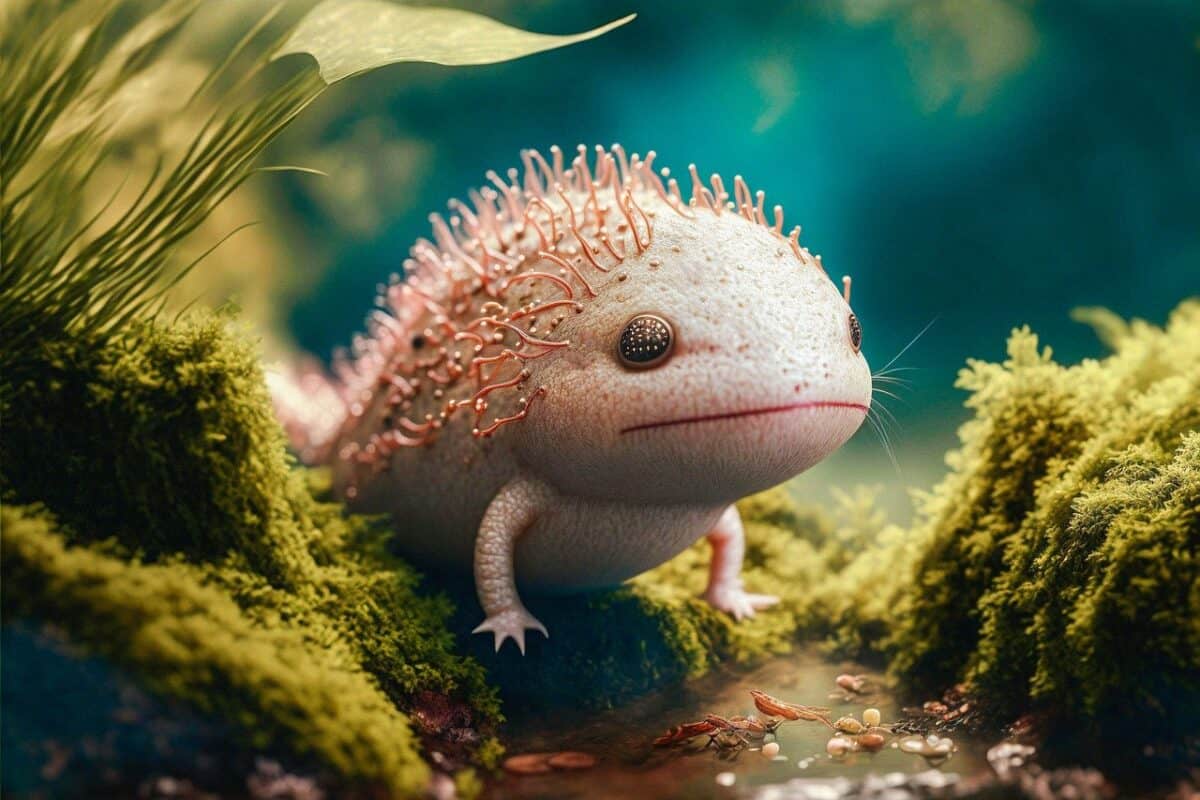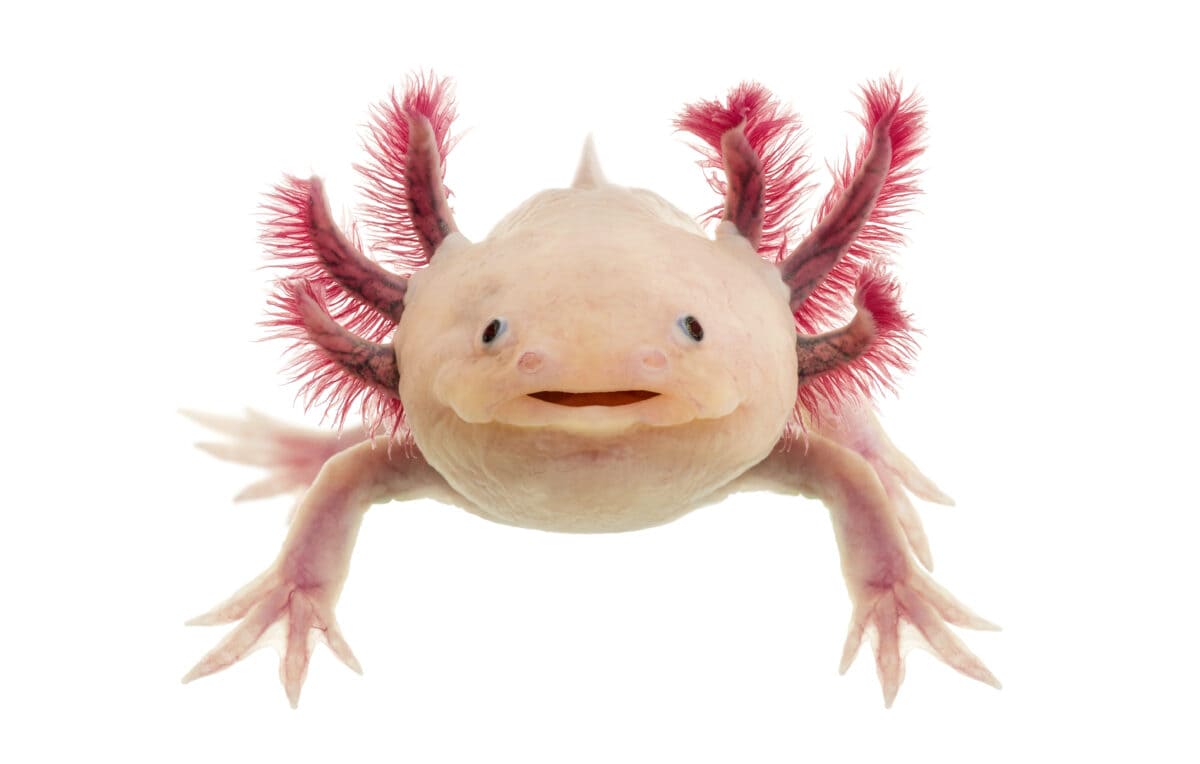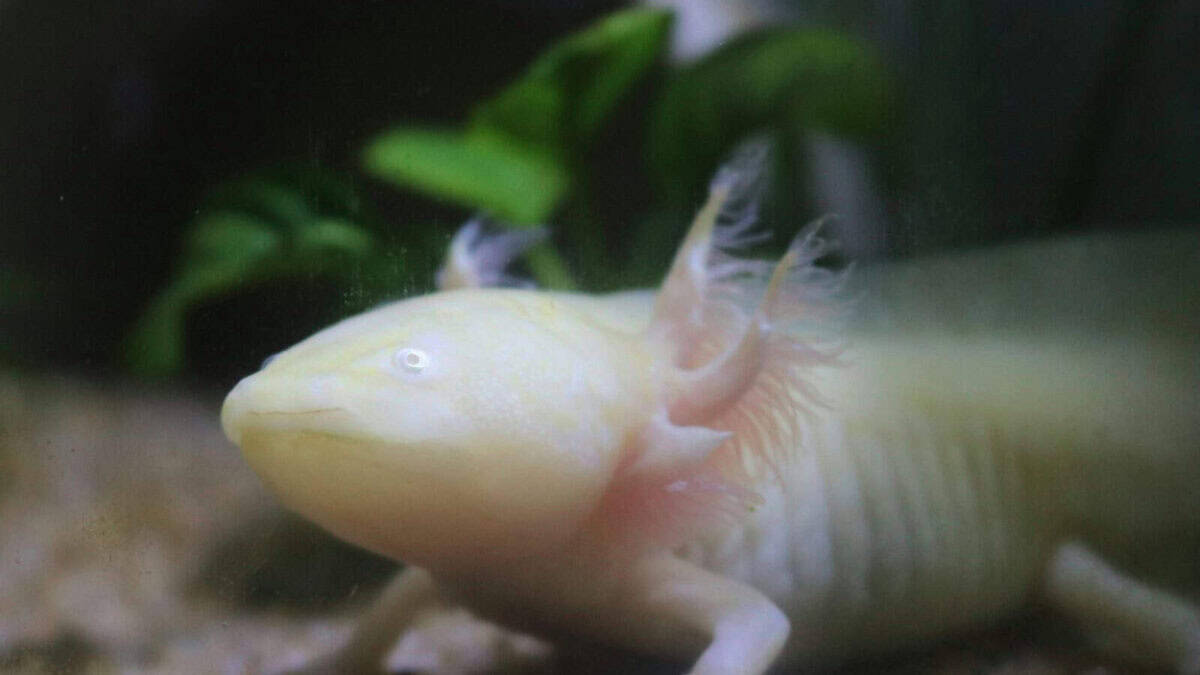Axolotls, those charismatic salamanders with their perpetual smiles and feathery external gills, have captured the imagination of animal enthusiasts worldwide. As their popularity has soared, particularly in the pet trade, so too have the myths and misconceptions surrounding these fascinating creatures. Native to Mexico’s Lake Xochimilco, these neotenic amphibians have become the subject of countless misunderstandings about their biology, care requirements, and capabilities.
Scientific research has made significant strides in understanding axolotl physiology, behavior, and ecological needs, yet popular misconceptions continue to circulate online and among pet owners. This article examines ten persistent myths about axolotls and provides the scientific evidence that debunks them. By separating fact from fiction, we can better appreciate these remarkable creatures and ensure their proper care both in captivity and conservation efforts.
Myth 10 Axolotls Are Just Baby Salamanders

One of the most common misconceptions about axolotls is that they’re simply the larval form of a common salamander species that hasn’t grown up yet. While it’s true that axolotls (Ambystoma mexicanum) remain in what appears to be a larval stage throughout their lives, they are a distinct species that has evolved to maintain juvenile characteristics into adulthood—a phenomenon called neoteny. Unlike typical salamanders that undergo metamorphosis to develop lungs and terrestrial features, axolotls naturally retain their aquatic characteristics, including external gills and fins.
This evolutionary adaptation allows axolotls to reproduce while maintaining their juvenile physical traits. They are fully mature, sexually reproductive adults despite their seemingly immature appearance. While it is technically possible to induce metamorphosis in axolotls using thyroid hormones, this is not their natural state and can actually be harmful to them. In the wild, they live their entire lives in water, never naturally transforming into a terrestrial form as other salamander species do.
Myth 9 Axolotls Can Survive in Any Water Conditions

A dangerous myth that persists among novice axolotl keepers is that these amphibians are hardy enough to thrive in virtually any water conditions. Scientific evidence thoroughly debunks this claim. Axolotls have specific water parameter requirements that must be maintained for their health and wellbeing. They prefer water temperatures between 60-68°F (16-20°C), significantly cooler than most tropical aquarium setups. Temperatures above 74°F (23°C) can cause stress, decreased appetite, and even death over time.
Water quality parameters are equally crucial for axolotl health. They require a pH between 6.5-8.0, ammonia and nitrite levels at 0 ppm, and nitrates below 20 ppm. Their sensitive, permeable skin makes them particularly vulnerable to toxins in the water. Additionally, axolotls produce significant biological waste, necessitating robust filtration systems that don’t create strong currents, as axolotls struggle in fast-moving water. Regular water testing and maintenance are essential components of responsible axolotl care, directly contradicting the myth that they can adapt to suboptimal conditions.
Myth 8 Axolotls Can Be Kept with Fish and Other Amphibians

Many aspiring axolotl owners mistakenly believe these salamanders make good tank mates for fish or other amphibians. Scientific observation and experienced keepers consistently demonstrate this is not the case. Axolotls have specific behavioral and physiological traits that make cohabitation problematic. Their slow movement and feeding behavior (sucking in water and food with a powerful vacuum action) make them vulnerable to fast-moving fish that may nip at their delicate gills and appendages, causing stress and injury.
Conversely, fish small enough to fit in an axolotl’s mouth will inevitably become prey, as axolotls are opportunistic predators. Even seemingly compatible tank mates can cause issues—tropical fish require warmer temperatures than axolotls can tolerate, while coldwater fish like goldfish produce too much waste and grow too large. Other amphibians may compete for resources or introduce pathogens. Research published in herpetological journals consistently recommends housing axolotls only with members of their own species of similar size, and even then, careful monitoring is required as cannibalism can occur, especially during feeding times or if size differences are substantial.
Myth 7 Axolotls Can Regrow Any Body Part Perfectly

Axolotls are famous for their remarkable regenerative abilities, but the common belief that they can perfectly regrow any body part is an exaggeration of their actual capabilities. While axolotls can regenerate limbs, portions of vital organs, spinal cord segments, and even parts of their brain—a truly extraordinary feat among vertebrates—there are limitations to this ability. Scientific studies have shown that regrowth isn’t always perfect or complete, particularly for complex structures or after multiple regenerations of the same area.
Research published in journals like Development and Regeneration reveals that axolotls regenerate through a process involving the formation of a blastema—a mass of dedifferentiated cells that can develop into the various tissues needed. However, this process can sometimes result in abnormalities, such as limbs with fewer digits than the original or structural differences in regrown tissue. Additionally, the regenerative capacity diminishes somewhat as axolotls age. It’s also important to note that certain injuries, particularly those affecting large portions of vital organs or resulting from severe infections, can still be fatal despite their regenerative capabilities. This reality represents a more nuanced understanding of axolotl regeneration than the perfect-regrowth myth suggests.
Myth 6 Axolotls Don’t Need Much Space

A persistent misconception holds that axolotls, being relatively sedentary creatures, don’t require much aquarium space. Scientific evidence and welfare guidelines strongly contradict this notion. Adult axolotls typically reach 9-12 inches in length and require a minimum of 20 gallons of water per individual, with 30+ gallons being more appropriate for their long-term health. The tank should provide adequate floor space rather than height, as axolotls spend most of their time at the bottom of their habitat.
Spatial requirements aren’t just about the axolotl’s physical size but also about water quality maintenance. Larger water volumes provide more stable water parameters, diluting waste products and temperature fluctuations. Research on amphibian welfare indicates that insufficient space contributes to stress, which can manifest as reduced appetite, weakened immune function, and increased susceptibility to disease. Behavioral studies show that axolotls do utilize the space available to them, exploring their environment and exhibiting more natural behaviors when provided adequate room. Additionally, proper space allows for the establishment of microenvironments within the tank, giving the axolotl options for temperature and light exposure, which is important for their welfare.
Myth 5 Axolotls Can Live on a Plant-Based Diet

Despite their gentle appearance and perpetual “smile,” axolotls are carnivores with specific nutritional requirements that cannot be met by plant matter. The myth that axolotls can thrive on vegetation or algae-based foods is completely unsupported by scientific evidence. In the wild, axolotls are predatory creatures that feed on small aquatic invertebrates, insects, small fish, and crustaceans. Their digestive system is specifically adapted to process animal protein and lacks the necessary enzymes to properly digest and extract nutrients from plant material.
Nutritional studies on salamander species consistently show that axolotls require high-protein diets rich in essential amino acids, vitamins, and minerals that are only available in animal-based foods. In captivity, appropriate diets include high-quality soft pellets formulated specifically for axolotls, earthworms, bloodworms, daphnia, and occasional small pieces of lean fish or shrimp. Axolotls fed improper diets develop nutritional deficiencies that can lead to skeletal deformities, weakened immune systems, reduced regenerative capabilities, and shortened lifespans. The persistence of this myth potentially endangers axolotls whose owners might attempt to convert them to an inappropriate and harmful vegetarian diet.
Myth 4 Axolotls Are Easy Pets for Beginners

The notion that axolotls make ideal starter pets for novice aquarists or children is a problematic myth that doesn’t align with the scientific understanding of their care requirements. While axolotls have certain appealing characteristics—they don’t need to be walked, don’t make noise, and have charming appearances—they have specialized needs that make them relatively complex to maintain properly. Research on captive amphibian welfare indicates that axolotls require stable water parameters, precise temperature ranges (cooler than most tropical fish), specific substrate considerations to prevent impaction, and particular filtration systems that provide clean water without creating strong currents.
Herpetological studies and exotic pet veterinary literature classify axolotls as intermediate to advanced-level pets. They need cycled aquariums with established beneficial bacteria colonies before introduction, regular water parameter testing, and careful feeding protocols. They’re sensitive to water quality fluctuations, with their permeable skin making them vulnerable to toxins. Additionally, they can live 10-15 years with proper care, representing a significant long-term commitment. Scientific evidence suggests that misunderstanding their needs leads to shortened lifespans in captivity and unnecessary suffering. Prospective owners should thoroughly research and prepare for axolotl care, rather than acquiring them on impulse due to their novel appearance.
Myth 3 Axolotls Change Color Based on Their Mood

A widespread misconception suggests that axolotls change color depending on their emotional state, similar to how some people believe chameleons function. Scientific research demonstrates this is not accurate. While axolotls can indeed exhibit color changes, these transformations are not indicators of mood or emotions but result from specific physiological processes. The primary factors influencing axolotl coloration include genetics, lighting conditions, diet, health status, and maturation. Their base coloration (wild-type, leucistic, albino, melanoid, etc.) is genetically determined and remains constant throughout their lives.
Temporary color changes observed in axolotls are typically responses to environmental conditions or health factors. For instance, axolotls may appear darker when kept in brightly lit environments as their melanophores (pigment cells) disperse melanin to protect their skin from excessive light exposure. Similarly, stress from poor water conditions or handling can cause temporary lightening or darkening. Researchers studying amphibian physiology have documented that axolotls experiencing iridovirus infections may display unusual coloration patterns. What might be interpreted as “mood changes” are actually physiological responses to environmental stimuli or health issues that warrant attention from caregivers. Understanding the true nature of axolotl color changes is important for proper health monitoring and debunking anthropomorphic interpretations of their appearance.
Myth 2 Axolotls Never Need Veterinary Care

The dangerous myth that axolotls are self-healing creatures that never require professional medical intervention contradicts veterinary science and responsible animal husbandry practices. While axolotls do possess remarkable regenerative capabilities that allow them to recover from certain injuries, they remain susceptible to numerous health conditions that require proper diagnosis and treatment. Studies in amphibian medicine demonstrate that axolotls can suffer from bacterial infections, fungal outbreaks, parasitic infestations, nutritional deficiencies, and various environmental stress-related conditions that their regenerative abilities cannot address.
Veterinary research indicates that early intervention significantly improves outcomes for sick axolotls. Conditions such as impaction from inappropriate substrate, ammonia poisoning from poor water quality, or systemic infections require proper veterinary care from professionals experienced with amphibians. The field of exotic animal medicine has advanced considerably, with specialized veterinarians now able to treat various axolotl-specific conditions. Regular health monitoring, preventative care practices, and establishing a relationship with an exotic pet veterinarian are essential components of responsible axolotl ownership. The myth that these animals never need medical attention potentially leads to unnecessary suffering when treatable conditions are left to progress under the misguided belief that the axolotl will heal itself.
Myth 1 Axolotls Are Going Extinct Due to the Pet Trade

A common misconception holds that the pet trade is primarily responsible for the critically endangered status of wild axolotls. While the commercial collection of wild specimens did historically impact populations, scientific research indicates that the current threats to wild axolotls are much more complex and primarily environmental. Studies by conservation biologists at UNAM (Universidad Nacional Autónoma de México) and other research institutions have identified the main factors threatening wild axolotls: severe water pollution from Mexico City’s urban expansion, habitat destruction of Lake Xochimilco’s canal systems, introduction of invasive fish species that prey on axolotl eggs and young, and water diversion projects that have dramatically altered their native ecosystem.
Importantly, conservation geneticists have determined that virtually all axolotls in the pet trade today are captive-bred specimens from lineages that have been maintained in laboratories and by breeders for many generations. These captive populations actually represent a potential genetic reservoir that could theoretically aid conservation efforts, though genetic diversity concerns exist due to inbreeding in some captive lines. The International Union for Conservation of Nature (IUCN) recognizes that addressing the environmental degradation of Lake Xochimilco is the critical factor for wild axolotl survival, rather than restricting the trade of captive-bred specimens. Conservation efforts now focus on habitat restoration, water quality improvement, and the removal of invasive species from the remaining wild axolotl habitat.
Conclusion: Separating Axolotl Fact from Fiction

The persistence of myths surrounding axolotls demonstrates how easily misinformation can spread, even in an age of scientific advancement and ready access to information. By examining these ten common misconceptions through the lens of scientific evidence, we gain a more accurate understanding of these remarkable creatures and their specific needs. From their unique evolutionary adaptations to their precise care requirements, axolotls deserve our informed attention rather than well-intentioned but potentially harmful misconceptions.
For current and prospective axolotl owners, recognizing these myths is crucial for providing appropriate care. The scientific reality of axolotl biology—their specialized environmental needs, dietary requirements, social behaviors, and health considerations—should guide husbandry practices. Conservation efforts likewise benefit from accurate information that addresses the genuine threats facing wild populations rather than misattributed causes.
As research continues to expand our knowledge of axolotl biology, particularly in the fields of regenerative medicine and conservation genetics, we can expect even more myths to be dispelled. These smiling salamanders have much to teach us about evolution, adaptation, and resilience, but only if we approach them with scientific curiosity rather than perpetuating outdated misconceptions. The responsibility falls to researchers, educators, and axolotl enthusiasts alike to share accurate information and ensure these extraordinary creatures receive the understanding and care they deserve.
By embracing evidence-based knowledge about axolotls, we not only improve the welfare of captive specimens but also contribute to broader conservation goals that may help preserve their wild counterparts for generations to come. The fascination these unique amphibians inspire can serve as a gateway to deeper appreciation for scientific inquiry and biological diversity—provided we separate axolotl fact from fiction.
- 10 Animals That Use Camouflage Best - August 17, 2025
- 13 Wild Birds That Use Tools to Hunt - August 17, 2025
- 9 Smartest Animal Species in North America—And Why They’re So Clever - August 17, 2025

